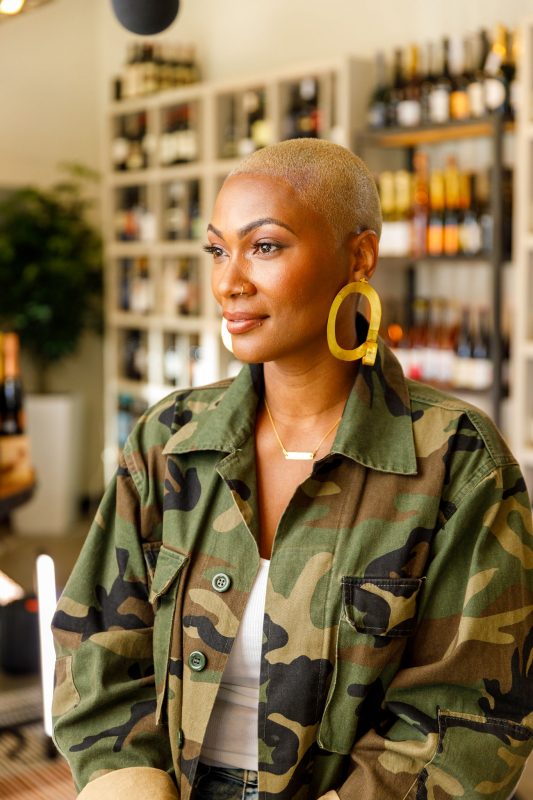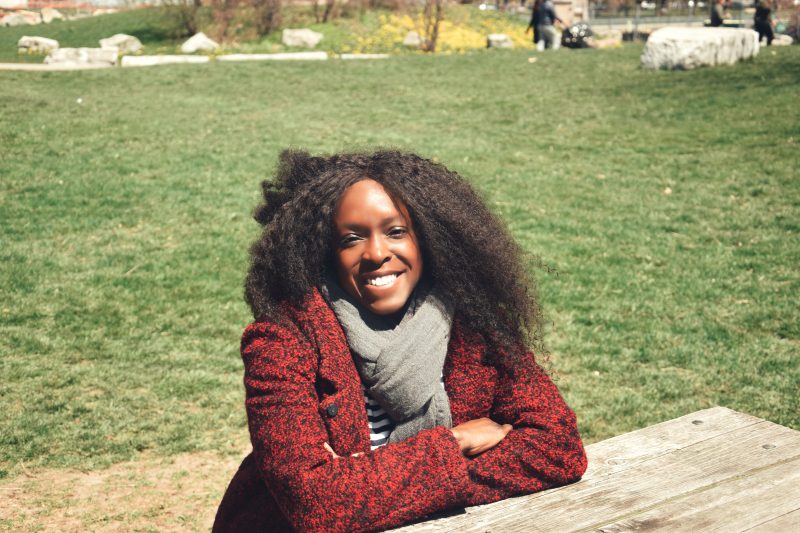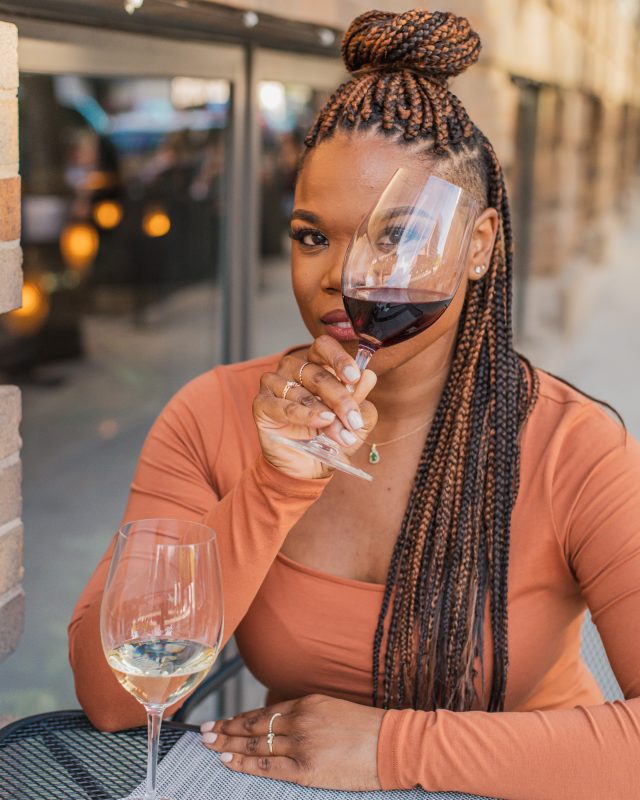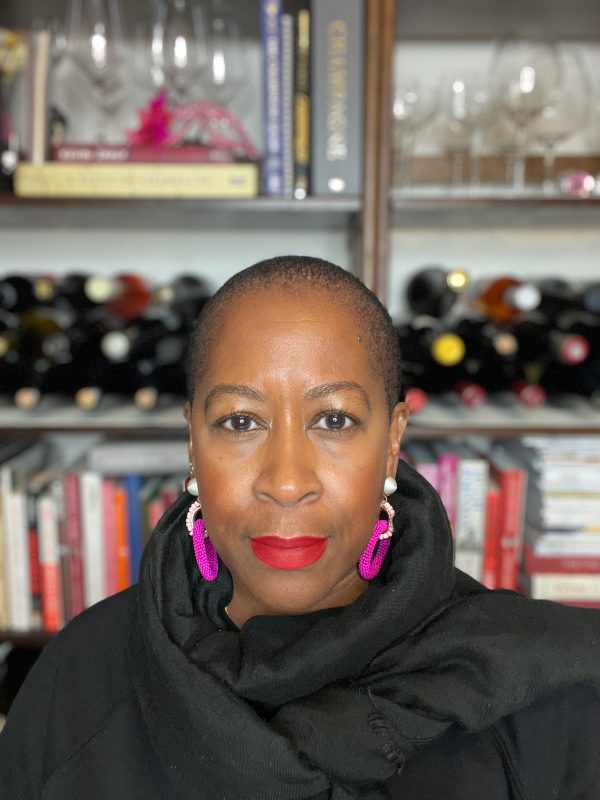This article originally appeared in the Spring 2022 print issue of Quench Magazine
In 2020, the Covid-19 pandemic and a ‘racial reckoning’ instigated by the senseless murders of George Floyd and Breonna Taylor swept across the world.
Recognition of the daily racism experienced by Black people became a catalyst for change. In the wine industry, the charge has been led spiritually and intellectually by several inspirational Black women who sought to revolutionize access and education in the wine world, calling out the wine industry for its lack of inclusion of Black, Indigenous and people of colour (BIPOC). This group of educators and experienced wine professionals includes Julia Coney (Black Wine Professionals), Tahiirah Habibi (The Hue Society and The Roots Fund), and Ashtin Berry (Radical Xchange), to name a few. Would-be gatekeepers quickly promised a fundamental rethink and wider partnership in the industry, but how much has really changed in the wine world since 2020?
As I write, the worst of the pandemic appears to be behind us; restaurants in Canada and further afield have reopened for business. But post-2020, I wonder if the racial reckoning has really delivered on its promises? I am a sommelier and wine director in one of Canada’s top fine dining restaurants with more than 15 years’ experience in hospitality. Nonetheless, during dinner service and as I go about my business, I am still frequently reminded that as a Black man I am an oddity in this environment. Where are you from? You speak so eloquently! How do you know so much about wine? Where did you go to school? These are just a few examples of some of the more ‘innocent,’ but nonetheless quietly insidious questions that I am confronted with almost daily.

Christopher Wilton, a sommelier, consultant, and wine educator in Peterborough, Ontario, explains that with these types of questions, “what is happening is an establishment of a relationship of power. The white person is questioning the fact that you are not from here or if you really belong in this space, as you don’t ‘look’ like one of us.” It is assumed, in short, that wine is a “white” (and predominantly male) space. Wilton elaborates on this point with greater clarity: “the sommelier occupies a dynamic space in the restaurant hierarchy. A sommelier has a specialized technical knowledge. When you are a Black sommelier you also execute and present in a manner that could be interpreted as equating to ‘whiteness’ even to a white per-son, and frankly quite often [more intelligent-ly] than the average white person.” Despite all the professed awareness of the last 2 years, the continued frequency of these questions reflects the reality of being BIPOC in Canada, where the experience of racism is subtle and entrenched in notions of exceptionalism.
Sadly, it is not just in the restaurant or tasting room that the intelligence, knowledge, and humanity of the BIPOC wine professional comes under scrutiny. Microaggressions often begin in the classroom through instructors, educators and curriculum, and even continue with mentors and peers in the industry. As Beverly Crandon, a certified sommelier based in Toronto and a co-founder of VinEquity, which focuses on advocacy, equity, and scholarship for the BIPOC wine community, told me recently, for BIPOC, a racist encounter “sneaks up on you and makes you realize how others see you. Women, especially women of colour are viewed as “party tricks” at wine events, especially in rooms with the ‘highly educated elite.’” As in so many other fields, systemic racism is baked into the wine industry at every level.
The reality is that the challenges of racism we face today in the wine world are very much the same challenges of yesterday. Dorothy Gaiter, the prominent New York-based wine journalist, author, and
critic, has witnessed the growth of the US wine industry in the current era. She espouses a big picture perspective in her view that “diversity, equity and inclusion in an industry is not charity,” it is “plain good business sense…addressing all individuals in meaningful and lasting ways…will equate to businesses surviving and growing by appealing to as many markets as possi-ble.” This way of thinking requires good faith and participation on a real, human level, but outside of the BIPOC community there have been few progressive shifts in the industry, and regrettably these have been mostly token efforts. As Ashtin Berry, a New Orleans-based hospitality activist, writer, and educator, puts it “People [have] tried to copy-paste equity into their structures without questioning why their structures were so white in the first place!”
It will come as no surprise that the gate-keepers of the wine world have historically been, and in many cases continue to be, white people. They control and decide upon the quality of language employed in a classroom, the choice of the instructors, the content that is delivered and how, and ultimately who deserves a pass and what constitutes a fail for accreditation. After many years of working, teaching, and training in the wine industry, it is clear to me that despite plenty of well-meaning statements of allyship and promised change, this code was one that was never designed to be broken.
It is this realization that must inform how we as BIPOC in this industry now approach the future of the wine world. Although we can begin by questioning leadership, the ‘gatekeepers,’ and asking why there is contin-ued resistance to change, Berry, for one, has made clear that she “can’t be concerned with their fears” and that “centering them in this conversation” is the problem for the advance-ment of BIPOC. Instead, we ‘‘must understand that we are all adults in this conversation, ‘white people’ are responsible for their own feelings. Their weaponized incompetence is no longer acceptable!”

Christopher Wilton | photo credit: supplied 
Julia Coney | photo credit: supplied
Yes, gatekeepers are at the root of resistance to significant change, but pressure is much better concentrated elsewhere. As Wilton puts it, “White people need to challenge white people.” There can be no real change in the gatekeeper community until it happens behind those closed gates.
This brings us to the classroom and the institutions for wine education that provide certification. The Wine and Spirits Education Trust (WSET) and the Court of Master Sommelier (CMS) are two of the most prominent of these, but there are many other international partner organizations, including colleges and universities, that offer general and specialized education in wine and use the WSET or CMS as their standard. When I returned to wine school last January to upgrade my certification, I was shocked that by-and-large the instructors, though accomplished wine professionals, were often not thoughtful educators. The syllabus did not aim to enlighten or clarify, it did not reflect the world outside the classroom. Instead it seemed in many cases to fall just short of a marketing text.
Fifteen years ago, I was the only person of colour to graduate from my wine certification course. Although the student body now spans all spectrums of race and identity, their experiences and interests are noticeably absent from the curriculum, and the teaching style has remained more or less the same as when I first began. This is a problem.
I raised this issue with Beverly Crandon. She believes that, especially
in Canada, “educators should look like the audience, the student body. Even like the outside world.” A truism which bears repeating is that diversity in instruction can create trust, credibility, and safe spaces in the classroom. It helps immensely when instructors and mentors have similar lived experiences to the students they are teaching. Dorothy Gaiter has observed that enrollment in wine institutions has been on the rise everywhere in the last 2 years, and “…that for many BIPOC and LGBTQ+ people, these certifications serve as a sort of armor that they feel they need to work in the wine industry.” A useful armour indeed, especially when dealing with micro-aggressive table-side questions, dismissiveness from a peer, or more generally when navigating an industry that is so heavily associated with white Europeanness.
Armour aside, the question of whether these institutions are still relevant and whether wine accreditation is delivered as education or indoctrination, remains a pertinent one. Ashtin Berry again offers a response. She tells me that it is “essentially a hierarchy of schools of thoughts, that give you entrance into a fraternity…if it doesn’t teach a full history and have a range of mod-els relevant to the regions then it’s indoctrination.”
Though Berry is not entirely against classroom education, she is quick to point out that considerable resources are available to help the aspiring wine professional learn successfully on their own. Chasity Cooper, for instance, is not convinced that institutional wine education was necessary for her.

Chasity is a Chicago-based certified sommelier, wine writer, and journalist. She admits that although certification on her way up gave her “the tools to navigate and translate the language of wine to her many different audiences,” she tells me she would not do it again without first seeing significant changes in the curriculum. Beverly Crandon puts it more bluntly “… going to wine school is useless if only for a certificate you earn so you can just talk to one another. One needs to take that information, process and apply it in meaningful ways.” In other words, we should be addressing the difference between an education that elevates and an accreditation that merely indoctrinates.
When we speak of indoctrination in wine education, the elephant here, as it always is when we discuss such dyed-in-the-wool notions of ‘elite’ culture, is the whiteness in the room. The bottom line is that some of what is currently being taught in wine institutions is no longer relevant in a post-2020 world and certainly not without institutional change. Berry again: “Are these institutions and instructors willing to ‘acknowledge that colonialism is an integral component of the history of wine?’ Are these institutions capable of ‘reassessing the [disproportionate] valuations they have given to different regions?”

Decolonizing wine’s rigid and biased language as well as its non-European history requires transparency and an acknowledgement that wine’s culture and past is not “neutral” or apolitical. Being transparent also means that at a minimum we acknowledge the African slave labour on which port towns such as Bordeaux and Nantes relied to gain their economic head start during the 1700s; we discuss that wine production on the Canary Islands in the 1500s displaced its indigenous inhabitants; and we recognize and accept that the transatlantic ships that brought Madeira wine to America also carried ‘cargo’ more precious and more poignant than wine.
As in society and education at large, there is also a history of misinformation and whitewashing in wine education that should be countered. Language, for instance, is a hot topic in the world of wine. There is growing acknowledgement that the tasting notes that we are currently tested against and are forced to assimilate to, are working at a deficit. Most of the citrus fruits (Middle Eastern), cinnamon, nutmeg, and vanilla spice (South Asian) and countless other tasting notes and flavours do not originate in “white” Western food world history. They are appropriated or shared. To tell someone that they don’t taste cinnamon when they may have spent their whole life tasting cinnamon in other contexts, borders on the absurd. Reflecting more deeply upon these accepted interpretations and developing new variations in how we talk about taste is one concrete way to challenge the language of wine and the exclusionary Eurocentrism within the culture.
In both the United States and Canada, BIPOC are organizing and preparing for a more inclusive wine industry with or without the self-appointed “gatekeepers.” In Canada, organizations such as Vinica in British Columbia and VinEquity in Toronto are taking action to effect permanent change. Through these and many sister organizations in the United States we will begin to shift the language and culture of learning within wine institutions and break down the barriers to true inclusivity. There is more wine being made and consumed than ever before and there is room for everyone. As we know, there is strength in numbers – diversity from the ground up is the key.
Christopher Sealy is the wine director for the alo food group. Christopher has been with the group since late 2015 when alo, the flagship restaurant, began to garner national and international attention as Canada’s premier fine dining tasting-menu only and wine-pairing restaurant. Alo currently sits at #90 on the San Pellegrino World’s 50 Best Restaurants. In 2019, Christopher was voted #1 Sommelier by Canada’s 100 Best. He is a mentor for Vinequity, an organization which aims to amplify the voices of Black, Indigenous, People of Colour and LGBTQ+, in the Canadian wine community.


